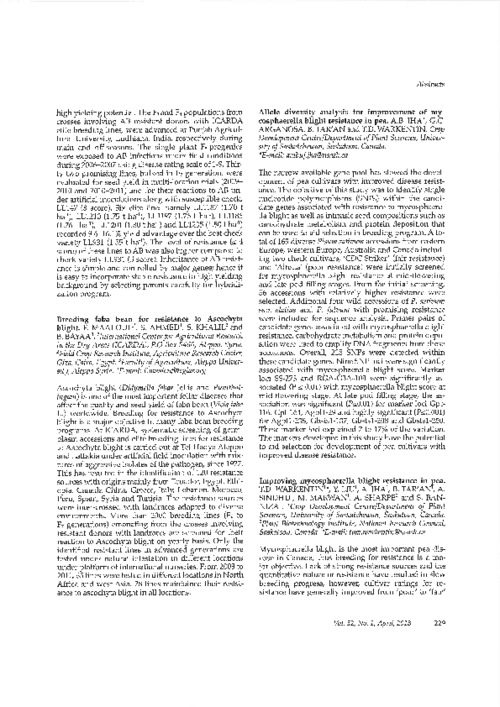Breeding faba bean for resistance to Ascochyta blight
Abstract
Ascochyta blight (Didymella fabae Jellis and Punithalingam)
is one of the most important foliar diseases that
affect the quality and seed yield of faba bean (Vicia faba
L.) worldwide. Breeding for resistance to Ascochyta
blight is a major objective in many faba bean breeding
programs. At ICARDA, systematic screening of germplasm
accessions and elite breeding lines for resistance
to Ascochyta blight is carried out at Tel Hadya Aleppo
and Lattakia under artificial field inoculation with mixtures
of aggressive isolates of the pathogen, since 1977.
This has resulted in the identification of 120 resistance
sources with origins mainly from Ecuador, Egypt, Ethiopia,
Canada China, Greece, Italy, Lebanon, Morocco,
Peru, Spain, Syria and Tunisia. The resistance sources
were inter-crossed with landraces adapted to diverse
environments. More than 2000 breeding lines (F4 to
F7 generations) emanating from the crosses involving
resistant donors with landraces are screened for their
reaction to Ascochyta blight on yearly basis. Only the
identified resistant lines in advanced generations are
tested under natural infestation in different locations
under platform of international nurseries. From 2008 to
2011, 65 lines were tested in different locations in North
Africa and west Asia. 28 lines maintained their resistance
to ascochyta blight in all locations

